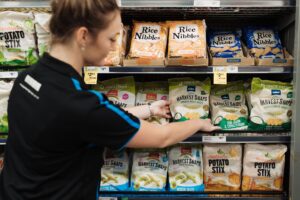Stock Replenishment: Why It Matters & How to Get It Right
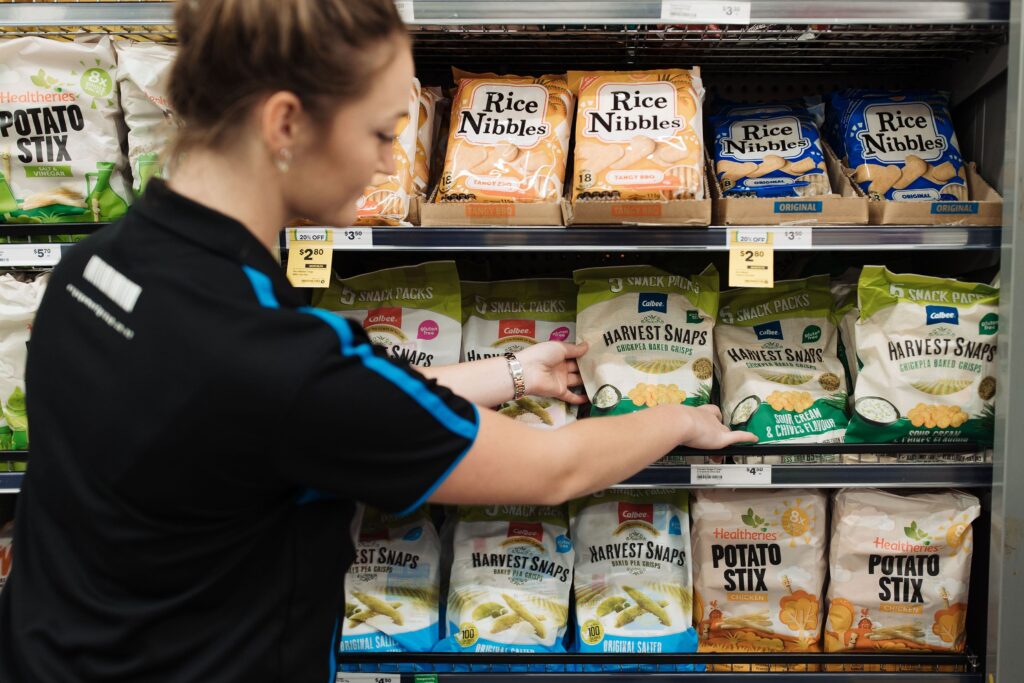
Stock replenishment is the process of ensuring that a business maintains optimal stock levels to meet customer demand effectively.
- Understanding Stock Replenishment
- The Importance and Benefits of Effective Stock Replenishment
- Stock Replenishment Methods
- Common Stock Replenishment Challenges
- Key Elements of Effective Stock Replenishment
- Replenishment Scenarios Across Different Retail Environments
- Best Practices for Stock Replenishment
- Case Study: How Stock Replenishment Improved Sales for Planet Fun
- Replenishment Solutions from Engagement Group
- Conclusion: Maximising Stock Replenishment for Business Success
For businesses that sell tangible goods, whether in a physical store or online, efficient inventory replenishment is crucial for increasing sales, reducing inventory costs, and maintaining a strong presence in the market. This guide will provide a comprehensive overview of stock replenishment, its importance, key methods, and best practices to help businesses enhance their often inefficient stock replenishment process and prevent excess or insufficient inventory.
Understanding Stock Replenishment
Stock replenishment is about keeping inventory levels balanced to meet customer demand and avoid stockouts or overstock situations. In simple terms, it’s making sure the right products are available in the right quantity, at the right place, and at the right time. Replenishment includes not just getting products onto the shelves but ensuring that they are in their correct location, priced properly, and timely—especially during promotions.
Rod – “Stock replenishment is ensuring new product is received by a store in its appropriate location, whether that be in a regular, off-location, or promotional space. Replenishment encourages stock turn, sales, and repeat orders.”
The Importance and Benefits of Effective Stock Replenishment
Stock replenishment is vital for maintaining optimal inventory levels, meeting customer demand, and ensuring business profitability. Let’s break down why it’s crucial:
Meeting Customer Demand & Satisfaction
A strong replenishment strategy ensures products are readily available when customers need them. This enhances the shopping experience and builds customer loyalty.
Cost Reduction
Maintaining the right inventory levels avoids costly overstocking and stockouts. This reduces holding and shipping costs, and potential losses from unsold products.
Increased Profitability
Quick and accurate stock replenishment aligns inventory with sales opportunities. By avoiding excess stock and stockouts, businesses can capture more sales and avoid financial drawbacks.
Supply Chain Efficiency
Effective replenishment streamlines supply chain processes, reducing lead times and improving turnover. This more efficient replenishment results in a responsive supply chain that adapts to shifts in demand efficiently.
By optimising replenishment, businesses can not only improve customer experiences but also reduce costs, enhance sales, and improve overall operational efficiency.
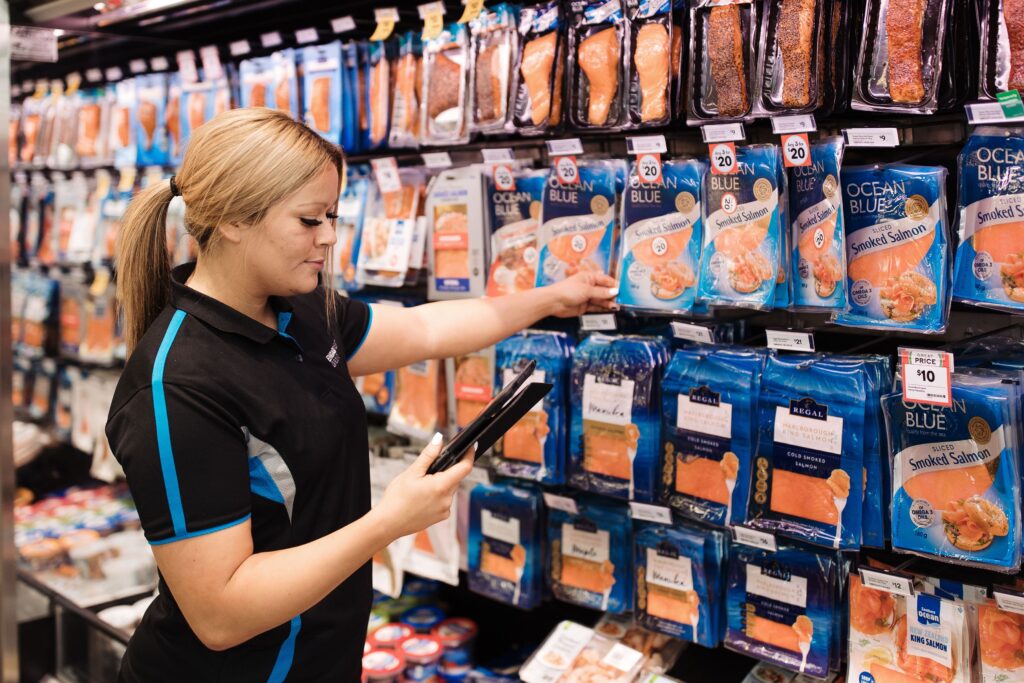
Stock Replenishment Methods
Different businesses and industries require varied approaches to stock replenishment. Here are some key methods:
Periodic Replenishment
Stock is replenished at fixed intervals (weekly, monthly) regardless of the current inventory level. This works well for predictable demand but may lead to excess stock if not closely monitored.
Reorder Point System
New stock is ordered when inventory levels fall below a predetermined point, known as the reorder point. This method allows for responsive replenishment, especially for items with fluctuating demand.
Demand-Driven Replenishment
Stock levels are managed based on real-time sales data and customer demand forecasting. By adjusting inventory based on trends and seasonality, brands can reduce excess stock and maintain optimal stock levels.
Top-Off Replenishment
This involves topping up stock regularly to maintain optimal inventory levels. It’s useful for items with steady demand and is often paired with automated systems to trigger orders to replenish stock as needed.
Lean Time Replenishment
Often used in lean inventory management, this method focuses on replenishing only what is necessary to keep stock levels efficient. It aims to minimise holding costs and reduce waste.
Understanding and choosing the right method is key to improving your inventory replenishment strategy and fulfilling customer orders efficiently.
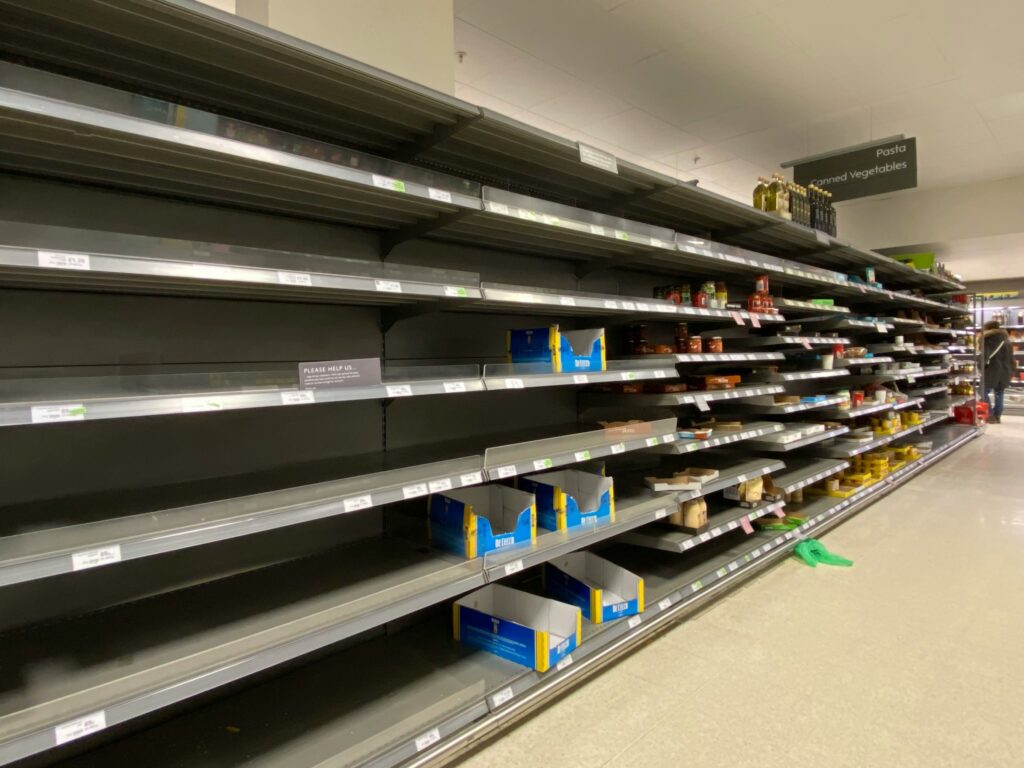
Common Stock Replenishment Challenges
While replenishment might seem straightforward, many brands face challenges. One misconception is assuming that retailers or stores automatically handle replenishment effectively. According to Rod, some businesses mistakenly rely on retailers, but stores are less likely to support stock unless the brand actively invests in replenishment.
Brands that do not prioritise active replenishment often face:
- Inconsistent Stock Levels: Stock levels falling too low or building up excessively, leading to stockouts or excess inventory.
- Inaccurate Replenishment Timing: Improper replenishment can disrupt supply chains, leaving gaps in stock availability during promotions or high-demand periods.
- Lack of Visibility: Without data metrics or real-time insights, brands struggle to monitor inventory, demand forecasting, and reorder points.
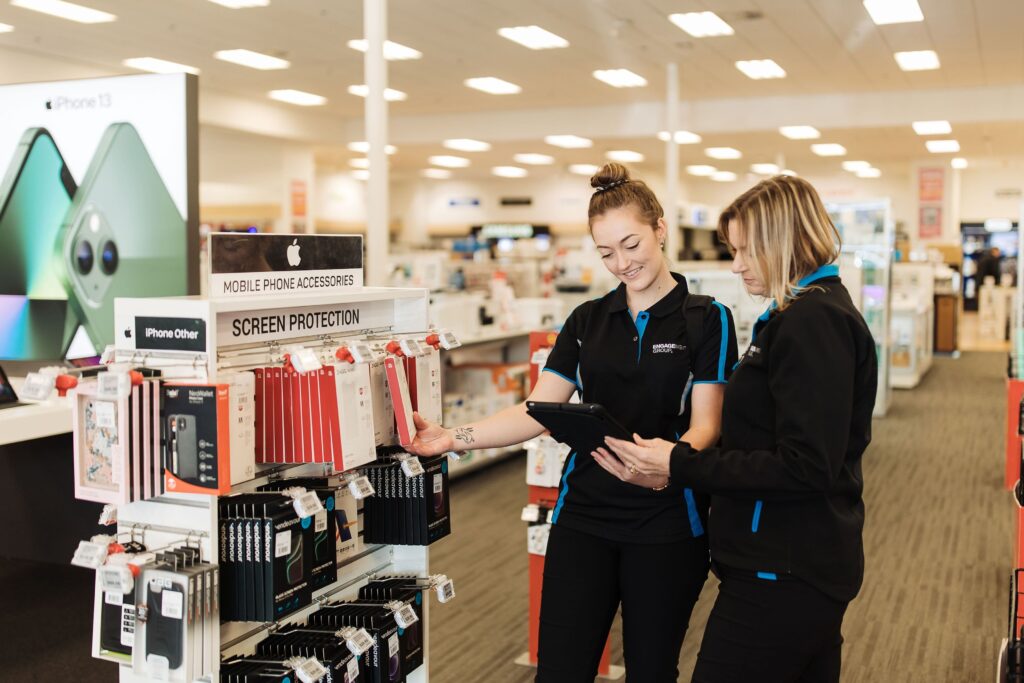
Key Elements of Effective Stock Replenishment
- Replenishment Frequency & Cadence: The cadence for replenishing stock depends on the product profile and sales velocity. For date-sensitive products, frequent replenishment is critical—sometimes weekly or even more often. Non-perishable items may require less frequent replenishment, perhaps monthly.
- Demand Forecasting: Using historical sales data and current market trends to predict customer demand helps prevent excess stock and stockouts. Demand forecasting is crucial to maintaining the correct inventory levels and meeting reorder points.
- Location & Visibility: Strategic product placement is crucial for effective replenishment. Whether it’s in high-traffic areas or promotional spaces, visibility can make or break a sale.
- Data-Driven Decisions: Utilising real-time inventory data helps brands keep track of stock levels, monitor sales channels, and optimise their inventory replenishment process. Implementing inventory management software can improve supply chain efficiency and prevent stock issues.
- Proactive Auditing & Reporting: Conducting regular store audits ensures that stock levels, display positioning, and promotional activities align with the replenishment strategy. Real-time reporting helps brands see what’s working and allows for quick adjustments.
Replenishment Scenarios Across Different Retail Environments
Stock replenishment varies across different types of retailers:
- Big Box Stores & Supermarkets: These environments typically have higher stock flow, so regular weekly replenishment is often necessary to keep up with demand.
- Pharmacies & Specialty Retailers: Products here may have different sales cycles, requiring tailored replenishment schedules that consider both high-turn and low-turn items.
- Promotional Spaces: When launching promotions or special offers, timely stock replenishment is crucial. Ensuring that special promotional items are well-stocked during these events boosts sales and customer satisfaction.
At Engagement Group, we believe that regularly reviewing stock replenishment needs is crucial, as each supplier and retailer has unique stock turn rates. A flexible approach allows businesses to adapt to these differences and effectively manage their inventory.
Best Practices for Stock Replenishment
- Set Optimal Reorder Points: Establish reorder points based on the demand and lead time of inventory to ensure stock is replenished before it runs out.
- Leverage Inventory Management Software: Implement a system that automatically tracks inventory levels, provides real-time data, and predicts future demand to streamline your replenishment process.
- Employ Inventory Replenishment Strategies: Depending on your business model and sales channels, consider different replenishment methods, such as lean-time replenishment, demand-based replenishment, or top-off replenishment.
- Maintain Safety Stock: Keeping a buffer stock of essential products helps prevent stockouts in case of unexpected spikes in demand or supply chain delays.
- Collaborate with Retail Partners: Ensure open communication with retailers to plan stock replenishment efficiently, aligning promotions, seasonal sales cycles, and restocking schedules.
Case Study: How Stock Replenishment Improved Sales for Planet Fun
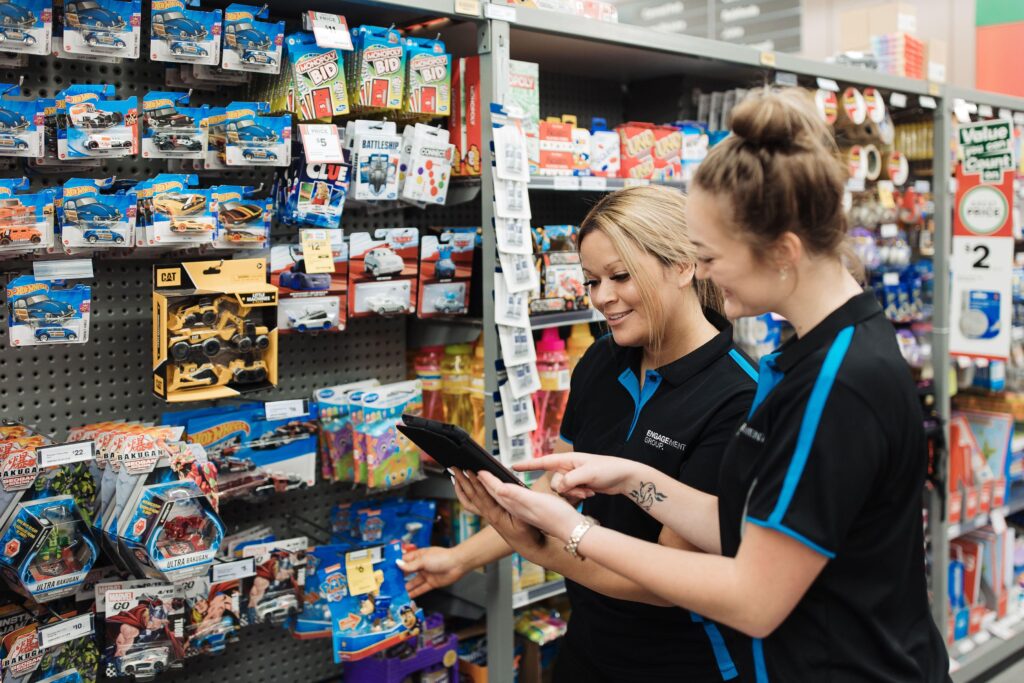
Engagement Group’s work with Planet Fun provides an excellent example of effective stock replenishment. By focusing on top-selling products and ensuring they were always available and well-presented on shelves, Engagement Group helped Planet Fun see substantial improvement. Our merchandising team drilled down into high-potential items, managing restocking and display standards in major retailers like Woolworths and The Warehouse. Consistency in the stock replenishment process and presentation led to better sales performance and a stronger presence in retail stores.

Replenishment Solutions from Engagement Group
Engagement Group’s approach to stock replenishment involves providing customised support based on the unique needs of each client. The team ensures:
- Strategic Placement: Making sure products are in high-traffic areas or key locations to maximise visibility.
- Timely Replenishment: Scheduling replenishment visits that align with sales trends, promotional events, and customer demand.
- Proactive Communication: Real-time feedback and auditing to monitor inventory levels, sales channels, and replenishment timing.
Our personalised approach helps clients maintain optimal inventory levels, reduce stockouts, and maximise sales opportunities.
Conclusion: Maximising Stock Replenishment for Business Success
Effective stock replenishment is key to meeting customer demand, maximising sales, and optimising inventory costs. By implementing best practices like proactive auditing, demand forecasting, and leveraging inventory management software, brands can improve their replenishment processes and build a strong retail presence.
If you’re looking for expert support in refining your stock replenishment strategies, contact Engagement Group today to ensure your products are always stocked and ready to sell. Let our team of merchandisers and brand ambassadors help you stay ahead in today’s fast-paced retail market.
How can we help your brand grow?
Get in touch with our team today for a free 30 minute consultation
Get Started
